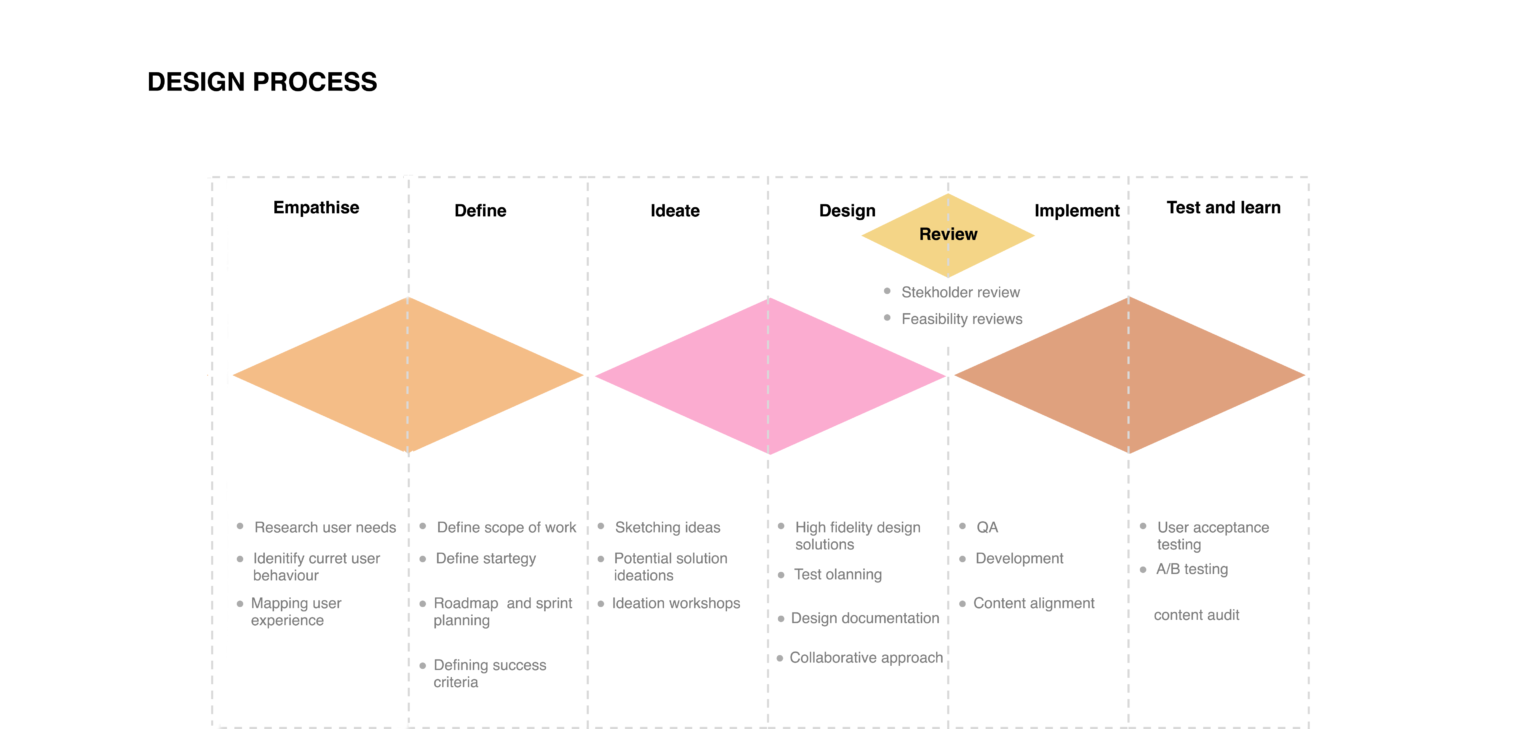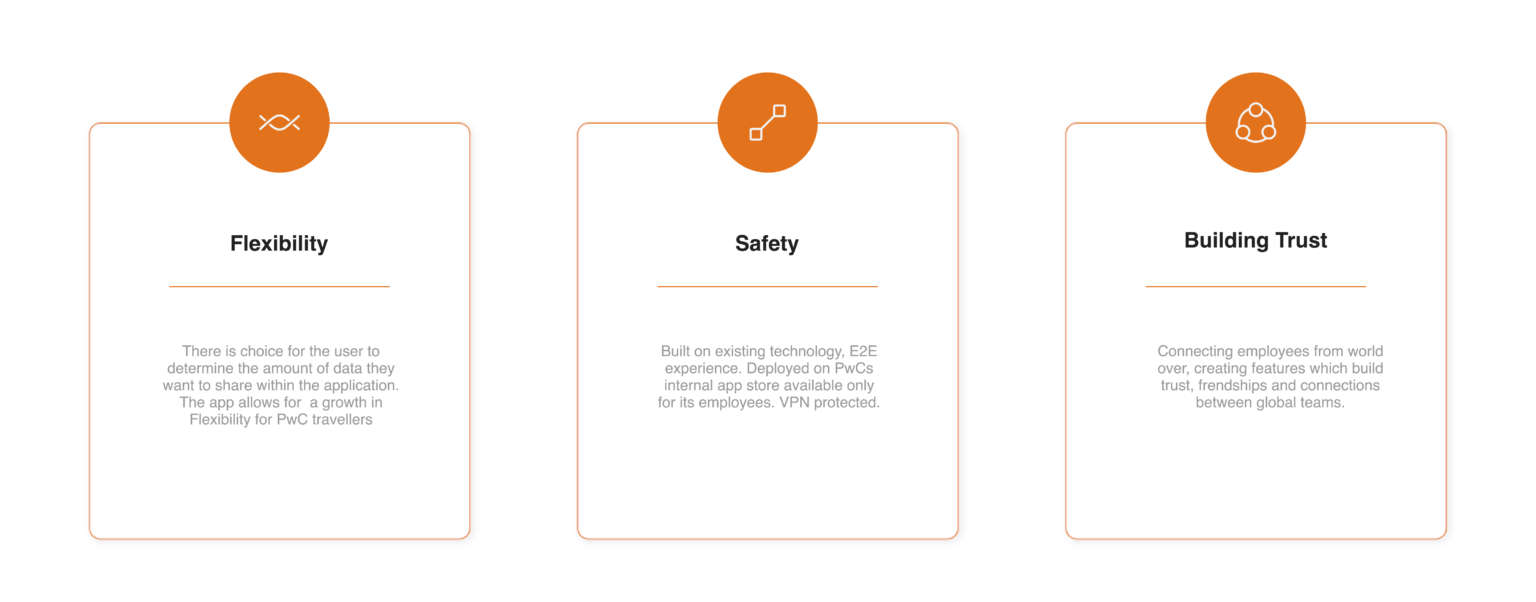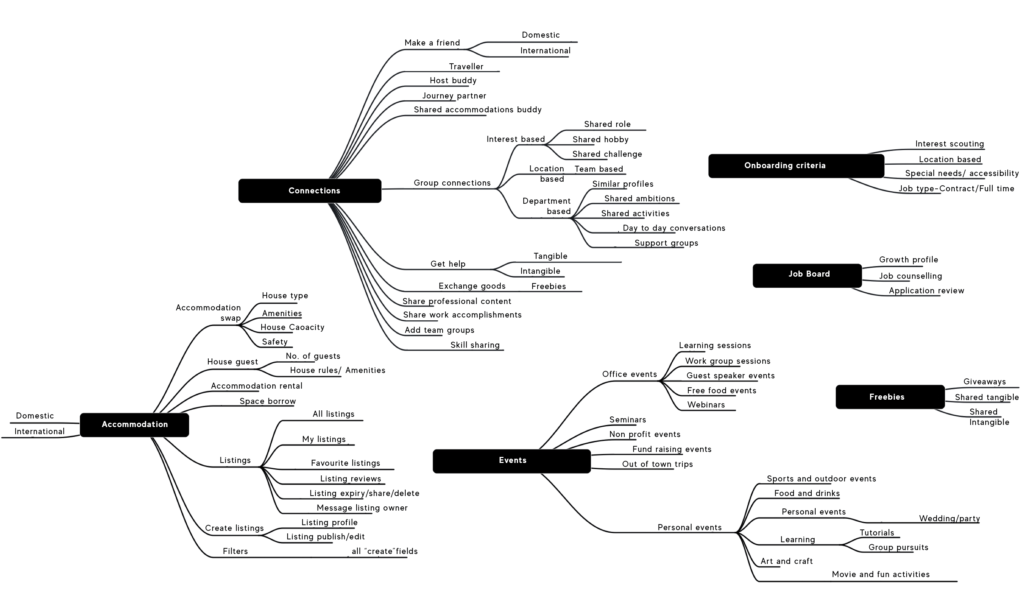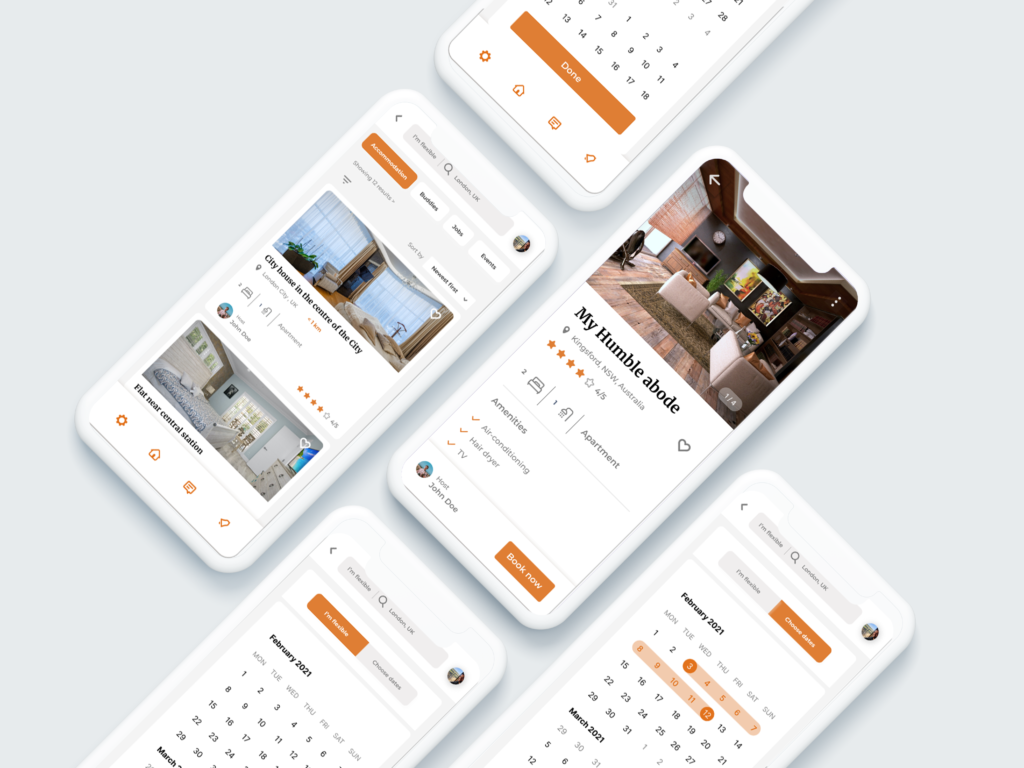
Project Brief
Designing a native mobile and web-based app for PwC Global which enables and facilitates PwC’s together anywhere program, as a solution to combat the attrition rate and the great resignation.
Client Type
PwC- Top four global consultancy firms / Fortune 500
Deliverables
Conducting workshops
Agile/scrum sprint planning- Dev ops
Sprint prioritization and retrospective planning
Product roadmap and release train planning
Stakeholder management
User research and analysis
System analysis
Requirement mapping
Use cases
Extensive user interviews
persona building,
Storyboarding
Material design/pattern library
Spec Map
Journey mapping,
empathy mapping,
product attribute chart
ideation and sketching
User flows, wireframes and low fi and hi fi prototypes
UAT test (User acceptance testing)
Usability testing
QA collaboration and bug testing
The Process
User Research And Analysis
The first step was to research about the policies determined in the together anywhere program which enables any PwC employee to live and work from anywhere in the world for a period of 8 week in a year. The first step was to map out the different types of personas that could use the program for its different intended purposes. There was research about the company global policy which highlighted key constraints for the user group. The next stage was to conduct workshops to understand user needs in mural and conduct in- person interviews with users from different demographic groups. The data revealed 8 personas with different needs for the application, of which there were three primary personas which comprised of to 70% of the users. Based on persona, there were user journey maps designed in mural, mapping out touch points, pain points and special needs of each group.

Roadmap And Agile Sprint Planning
Based on this data, the sprint plan and product roadmap was created in collaboration with the product owner, business analyst and product manager. Azure dev ops was used for project management for Together Anywhere app, and 2 weeks sprints (with daily stand ups), product backlog, and roadmap was mapped for the 6 months. I conducted feature prioritization sessions, sprint retros, and managed bug fixes along with the QA that took place during the project.

Requirement Mapping
After the user interviews and understanding their frustrations, the requirement criteria was created along with the functional use cases. Next step was to design a list of features for the backlog and conduct prioritization session, design a spec map which was a join collaboration between the BA and the design lead (me). Moreover, the key aspects of user engagement were identified as follows:

The user flows, and ideal journey maps were created for the possible travel of the users. This is also when similar products were studied like Airbnb, Gumtree, Amazon marketplace, Facebook marketplace, housemate.com, and meet up, as the product was a combination of them.
Ideation
The next stage was ideation, where in multiple versions of low-fi ideas and information architecture was mapped on paper and shortlisted based on the card sorting method for feature prioritization. Wireframes were then created in Figma after which the material design was created using atomic design principles in Figma. Next using components and assets, I created a final Figma prototype for release 1, which was set off for development.

DEVELOPMENT, UAT AND BUG FIXES
There was a very close collaboration between me and the dev team, and we had our own Dev design sessions daily in addition to the team stand ups, there was a user acceptance test that was scheduled for 3 focus groups from the top three personas, each comprising of 8 people.
The user acceptance test was done on four iOS and four android devices, and the experience of the users were recorded using a screen recorder. The test users later had to report on glitches, functionality and UI elements and their navigation through a carefully designed questionnaire form.
The findings of the UAT were logged as bugs in the query logs. There was also a special Bug prioritization session which led to improvisations in the release planning and roadmaps, based on the capabilities of the dev team to deliver in time.
Prototyping

RESULT
The final native mobile app for release 1 train has already been launched nationally, and has seen over 300 listings within the first month, with an average session length of 7 minutes. It has received a $5M funding and is now set to be launched in New Zealand, Canada, US and UK in the next releases.